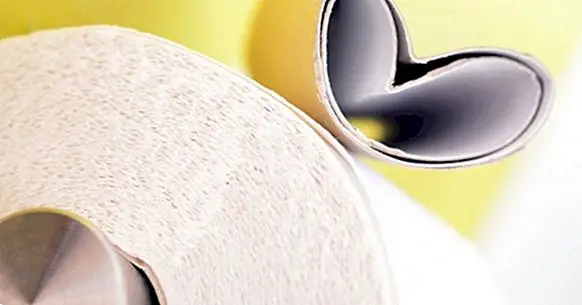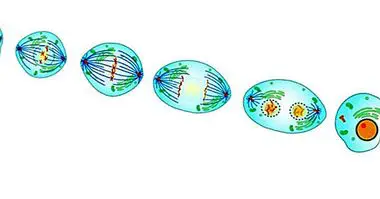The 7 types of stool (and what diseases or problems indicate)
Eating is a process through which living beings incorporate a series of nutrients into their bodies, coming from products foreign to the subject. But the process of feeding also generates waste and food debris that can not be digested, and that must be expelled from the body.
These residues take the form of faeces, which are eliminated by defecation. But the stools that we expel are not always the same, and sometimes we can worry about the possible existence of problems in the event of possible anomalies in our bowel movements.
The presence of different types of stools They may be offering a large amount of information regarding our digestion or our state of health. In fact, there are even stool classifications that aim to analyze indications of possible diseases or problems. An example is the Bristol Stool Scale, which classifies our stools into a total of seven stool types. It is of these seven types that we are going to talk about in this article.
- Related article: "This is the chemical dialogue between your brain and your stomach"
Stool: basic definition
Although it is a term that we all understand since defecation is something that we all carry out, it can be useful in order to analyze the seven types of stools to review the stool concept.
We name feces or excrements, among many other more colloquial names, fecal waste material set which is expelled through the anus in a solid or liquid form. It is the remnants of the food we consume, specifically those parts that can not be absorbed by the digestive system along with remnants of intestinal wall cells that have been flaked during the process of digestion.
But as we have said before, stools are not always the same, but they can have different consistencies and shapes. This is not merely formal, but rather provides information regarding how the digestive process has been , and could even be an indication of the presence of some type of alteration or disorder. That is why some scales have been generated in order to compare and analyze the type of excrement produced.
- Maybe you're interested: "10 healthy foods rich in magnesium"
Stool types according to the Bristol Stool Scale
One of the main scales used to assess feces is the Bristol Stool Scale, which divide the different types of feces into seven. This scale is very useful for doctors, since allows patients to identify the type of stool they usually excrete and make it easier to identify possible problems. The seven main stool types are the following.
Type 1: goat stool
These are stools in the form of small, hard, walnut-shaped fragments, which are difficult to excrete, resembling the faeces of goats. These little fragments barely contain water. This type of stool usually appears in people with a strong constipation, having been the food in the digestive system for a long time. The subject usually has a lack of fiber in their diet .
They can also appear to obstructions of the digestive tract or megacolon.
Type 2: earthy sausage, composed of ball-shaped structures
This type of stool is usually healthier than the previous one, although it is also usually typical of constipated people (although less serious than the previous one). The stools have the shape of a single elongated sausage, but in which large balls can be perceived as in the previous case. They have a hard consistency, also indicative of lack of fiber in the diet. Despite being indicative of certain constipation, it does not usually have a serious implication.
Type 3: cracked sausage
Although it resembles type 2, in this case we find a type of deposition in which we observe a single structure , although it is possible to observe that they go through different cracks and small bulges. In this case we are dealing with a stool of soft consistency, and is one of those considered as feces indicative of a normative digestive process.
Type 4: soft sausage
Considered together with type 3 as an ideal stool, this type of excrement It is characterized by having a unique and smooth shape . It would have a sausage or blood sausage shape without cracks or bulges, and a soft consistency. It would indicate a normal digestion.
Type 5: pieces of pasty dough with defined edges
These types of stools would be indicating us a possible deficit of fiber and a relatively fast transit without difficulties . These are pieces of fecal mass with well-defined edges and a pasty consistency.
Type 6: pasty patches of irregular edge
This type of stool is characterized by being almost liquid, appearing only fragments of which it is difficult to recognize the edges. It is usually produced in times of mild diarrhea , usually appearing before indigestion or viral processes and being able to cause dehydration.
Type 7: totally liquid stools
This last type of stool corresponds to situations in which the food has passed very quickly through the digestive system, appearing in situations of acute diarrhea of great importance. The stools are totally liquid, in the form of puree, not appearing any kind of solid element . This type of stool occurs at times when there is a risk of dehydration.
Color is also important
The above types are especially important when it comes to identifying how our stools are, but there are other factors such as color that also They can be indicative of different problems . In this sense we must consider what the following colors imply.
1. Brown stools
Brown is the usual color of the stool, being indicative of normality. Coloring It may be lighter or darker depending on the feeding .
2. Green stools
Although it may seem striking, the green color of the stools usually is derived from a diet rich in vegetables with chlorophyll or taking some drugs . They are common in the first week of life. It can also be indicative of food intolerances, blockages of the gallbladder or rapid intestinal transit.
3. Yellow stools
A yellow color in the stool may be indicative of more serious problems. It occurs as an effect of an excess of fats in the stool . You may be reporting liver problems (including hepatitis), problems with gastric reflux, gallstones, some bacterial infections, or celiac disease.
4. Red stools
The color red in the stool can come from foods such as beet or tomato. However, especially when stains appear in the stool or in toilet water, it may be due to the presence of blood in the excrement . This can come from injuries in the lower part of the digestive system.
5. Black or dark stools
The presence of black stools can be an indication of danger. It is usually due to the presence of bleeding or bleeding in the upper part of the digestive tract (which may arise even as a result of cancer or an ulcer), such as the stomach, or because of an excess of iron. Also the consumption of large quantities of some foods can generate them. It requires a consultation with the doctor.
6. White stools
It is not usual, but it can also happen that the stools are white or whitish. This is anomalous and may be indicative of obstructions, lack of bile, or liver or pancreatic problems . Also ganglionic problems or certain tumors can generate them. Also the consumption of some drugs can generate this coloration. In case our feces are white we should go to the doctor with haste.
Bibliographic references:
- Martínez, A.P. and de Azevedo, G.R. (2012). Translation, cultural adaptation and validation of the "Bristol Stool Form Scale". Rev. Latino-Am. Enfermagem, 20 (3).
- Ricard, F (2008). Treaty of visceral osteopathy and internal medicine. Volume II. Digestive System Written by François. Buenos Aires; Madrid: Panamericana Medical Publishing House.



















